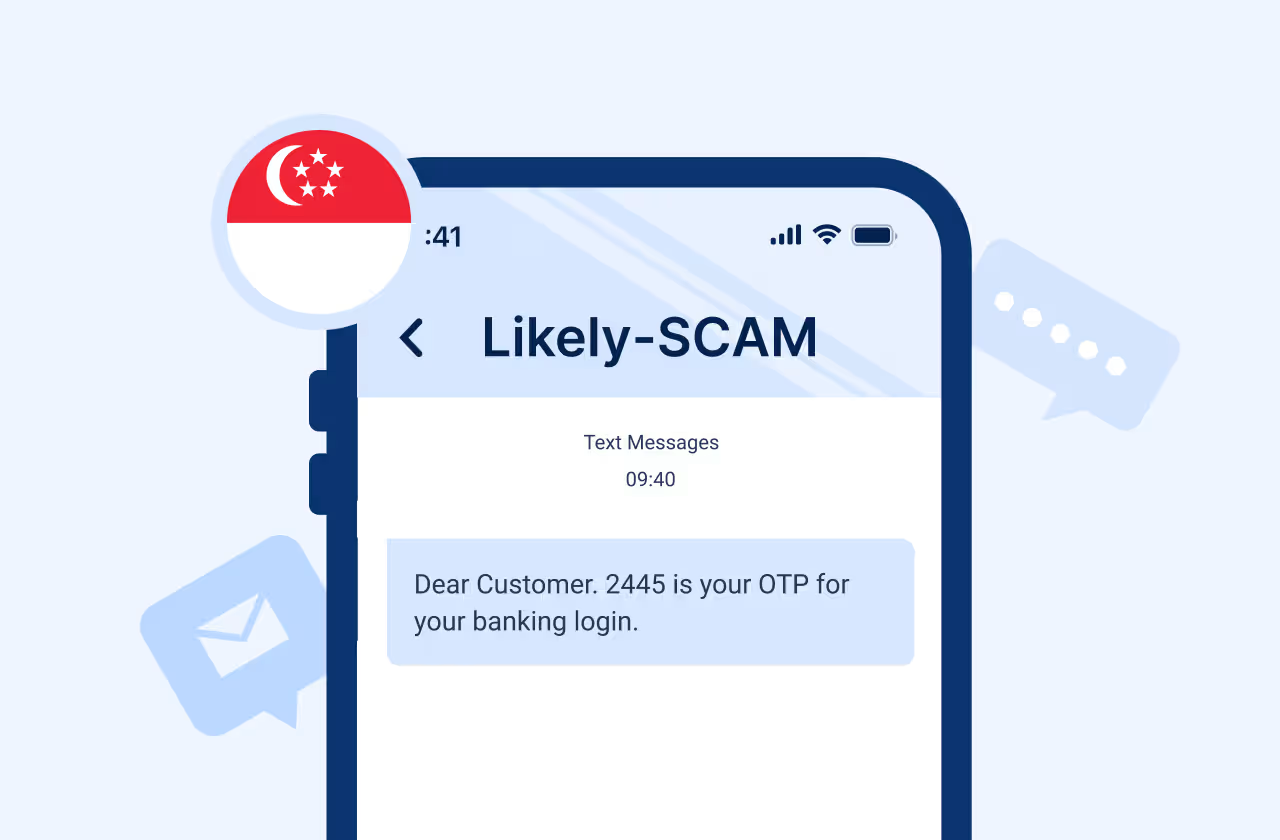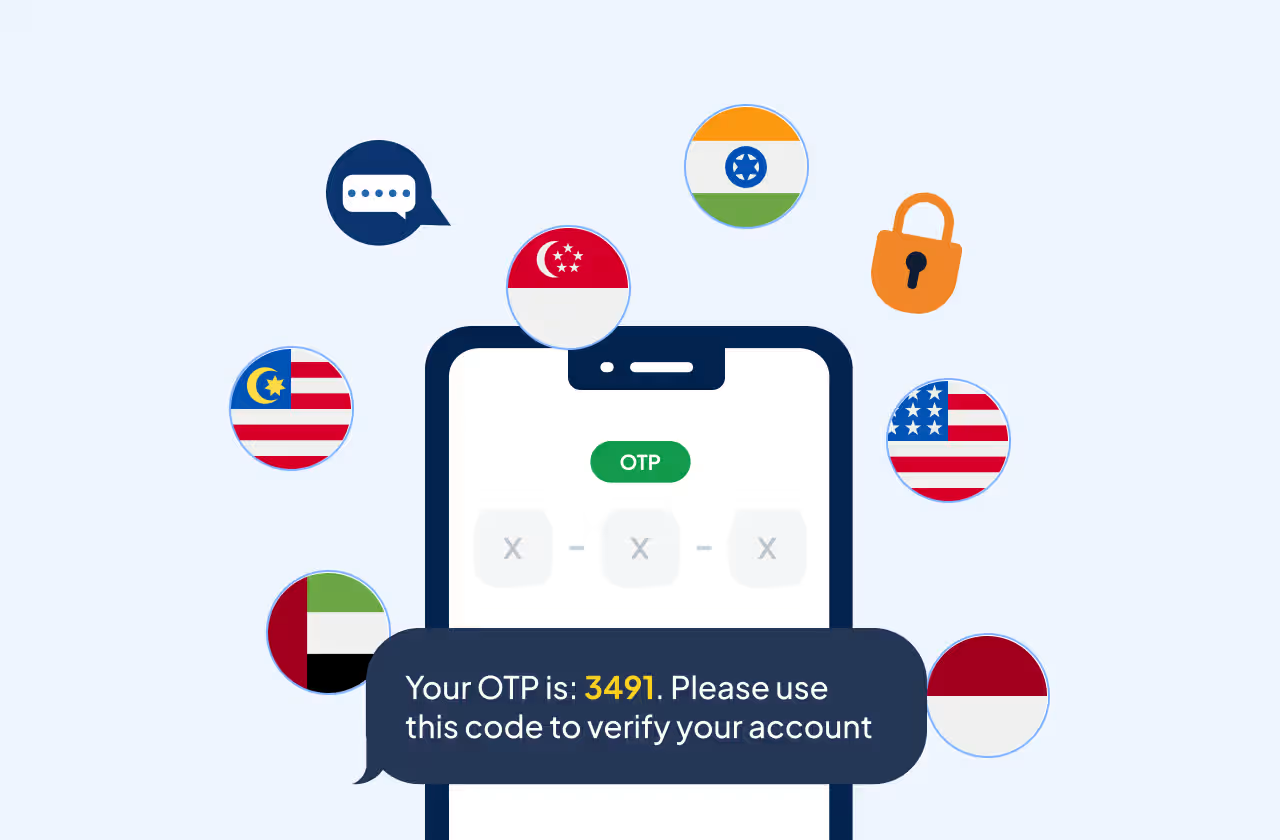Key Takeways
According to a report by Mobile Marketing Watch, SMS messages have a 98% open rate, and 90% are read within three minutes of being received. Furthermore, Gartner predicts that by 2025, 80% of customer service organizations will have abandoned mobile apps in favor of text messaging for better customer engagement.
Businesses thus are very keen on leveraging text messages in addition to basic use cases like SMS verification. Automated text messages which enable businesses to send pre-scheduled or triggered SMS to customers based on specific criteria or events. This capability is critical for ensuring timely and relevant communication.
How to Send Automated Text Messages?
1. Selecting an SMS API Provider
Choosing the right SMS API provider is the first step in sending automated text messages. Providers like Message Central offer robust features, high deliverability rates, and comprehensive support.
- Reliability and Deliverability: Ensure the provider guarantees high deliverability rates and reliability.
- Features: Look for features like message scheduling, two-way messaging, and analytics.
- Integration Capabilities: The API should easily integrate with your existing systems and workflows.
2. Integrate with Database/CRM
Integrating your SMS API with your database or CRM system allows for personalized, targeted and concatenated messaging. Here’s how to do it:
- Database Integration: Connect your SMS API to your customer database to pull relevant data, ensuring messages are personalized and timely.
- CRM Integration: Integrate with your CRM to automate messages based on customer interactions and lifecycle stages.
3. Manage Content Templates
Content templates are crucial for ensuring consistent and professional communication. They save time and help maintain brand voice. Bullet points
- Create Templates: Develop templates for different scenarios, such as appointment reminders, promotions, and alerts.
- Personalization: Use placeholders to personalize messages with customer names, appointment details, or order information.
- Approval Process: Implement an approval process for templates to ensure they meet regulatory and brand standards.
You can read more about the same in our guide on content templates.
4. Execute
Once your SMS API is integrated and templates are ready, it's time to execute:
- Scheduling: Schedule messages to be sent at optimal times for maximum engagement.
- Automation Triggers: Set up automation triggers based on specific actions or events, such as new sign-ups, purchases, or reminders.
- Monitoring and Analytics: Use analytics tools to monitor the performance of your campaigns and make data-driven decisions. SMS API providers like Message Central offer an SMS dashboard for monitoring SMS campaigns.
When to Send Automated Text Messages?

Automated text messages can be used in various scenarios to enhance customer engagement and operational efficiency. Here are some key use cases:
- Welcome Messages: Send a welcome message when a new customer signs up or makes their first purchase.
- Appointment Reminders: Reduce no-shows by sending appointment reminders a day or an hour before the scheduled time.
- Order Confirmations: Keep customers informed with order confirmations and shipping updates.
- Promotional Offers: Boost sales by sending personalized promotional SMS with offers and discounts.
- Event Reminders: Remind customers about upcoming events or webinars they’ve registered for.
- Feedback Requests: Request feedback after a service or purchase to improve customer satisfaction and loyalty.
Best Practices for Sending Automated Text Messages
- Obtain Consent: Ensure you have explicit consent from recipients before sending automated messages. This has been specified under A2P 10DLC.
- Personalization: Personalize messages to make them relevant and engaging.
- Timing: Schedule messages at times when recipients are most likely to engage.
- Compliance: Adhere to regulations such as the TCPA to avoid legal issues. You can refer to our guide on how to send SMS in USA for the same.
- Clear Call-to-Action: Include a clear call-to-action in your messages to encourage customer interaction.
Templates of Automated Text Messages
Here are some templates for common automated text messages:
- Welcome Message
Hi [Name], welcome to [Company]! We're excited to have you on board. Stay tuned for exclusive updates and offers.
- Appointment Reminder
Hi [Name], this is a reminder for your appointment with [Service Provider] on [Date] at [Time]. Please reply CONFIRM to confirm or RESCHEDULE to change your appointment.
- Order Confirmation
Hi [Name], your order #[Order Number] has been confirmed. You can expect delivery by [Delivery Date]. Thank you for shopping with us!
- Promotional Offer
Hi [Name], enjoy an exclusive 20% discount on your next purchase! Use code SAVE20 at checkout. Offer valid until [Date]. Shop now at [Link].
- Event Reminder
Hi [Name], don't forget about our upcoming event, [Event Name], on [Date] at [Time]. Click here for details: [Link].
- Feedback Request
Hi [Name], we hope you enjoyed your experience with [Service/Product]. We'd love to hear your feedback. Please take a moment to fill out our survey: [Link].
Enhanced Features for Automated Text Messaging
Automated text messaging is continually evolving with new features that enhance the efficiency and effectiveness of campaigns. Some of these advanced features include: Numbered List
- Advanced Analytics: Gain deeper insights into campaign performance with detailed analytics, including open rates, click-through rates, and conversion metrics.
- Geo-Targeting: Send location-based messages to customers, offering relevant promotions and updates based on their geographical location.
- Dynamic Content: Use dynamic content to personalize messages in real-time, ensuring each message is highly relevant to the recipient.
- Multi-Channel Integration: Integrate SMS campaigns with other communication channels such as email, social media, and push notifications to create a cohesive marketing strategy.
Send Automated Text Messages with Message Central
Message Central provides a robust platform for sending SMS messages in the USA, offering seamless integration and advanced features to enhance your SMS campaigns.
Benefits of Using Message Central:
- Reliable SMS Delivery
- Scalability with an intuitive platform
- Advanced Features
- Excellent Support
For more information and to start sending SMS messages with ease, you can get in touch with the team at Message Central.
Conclusion
Automated text messages are a powerful tool for businesses to engage with customers, improve operational efficiency, and drive sales. By selecting a reliable SMS API provider, integrating with your database or CRM, managing content templates, and following best practices, you can execute successful automated SMS campaigns.










